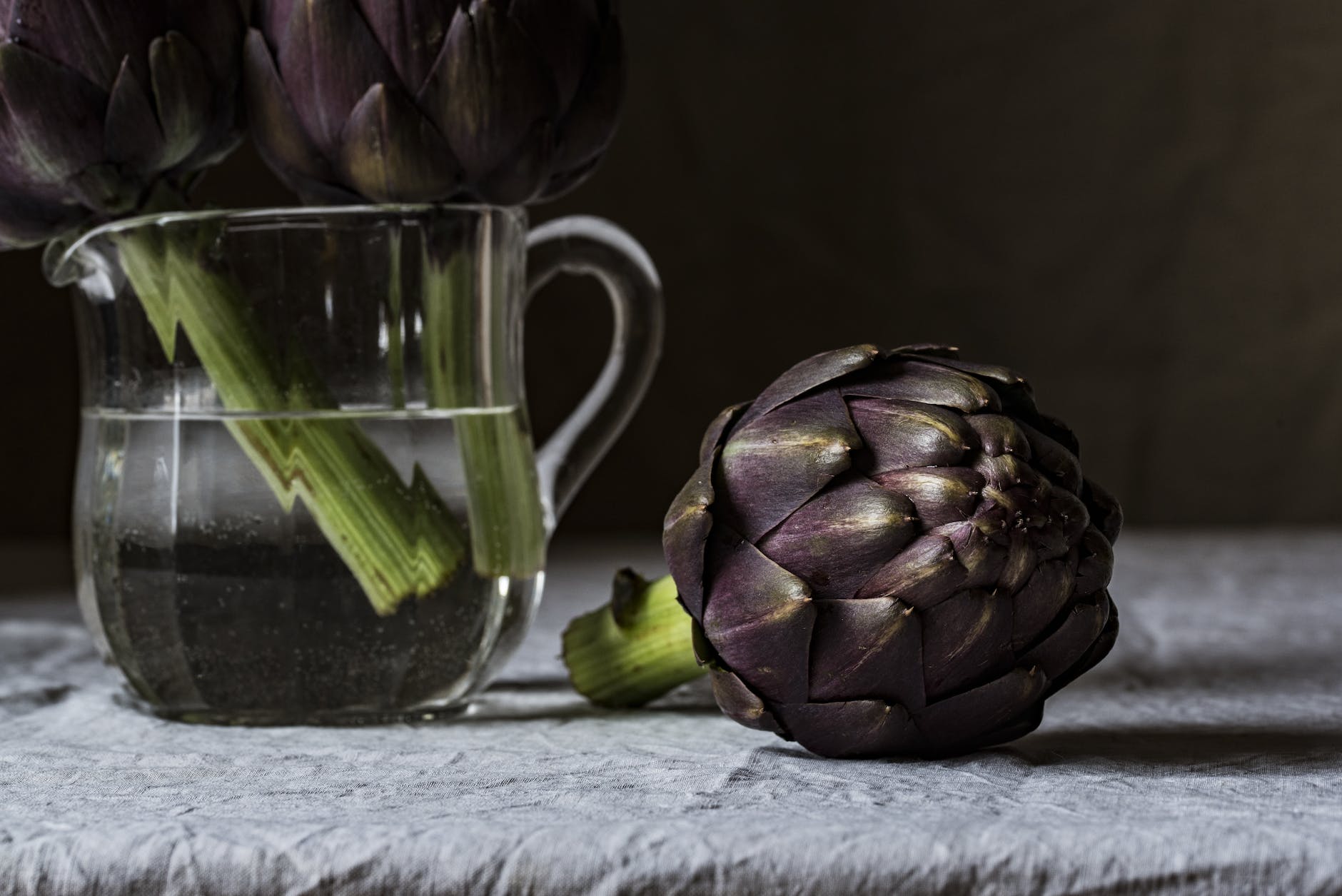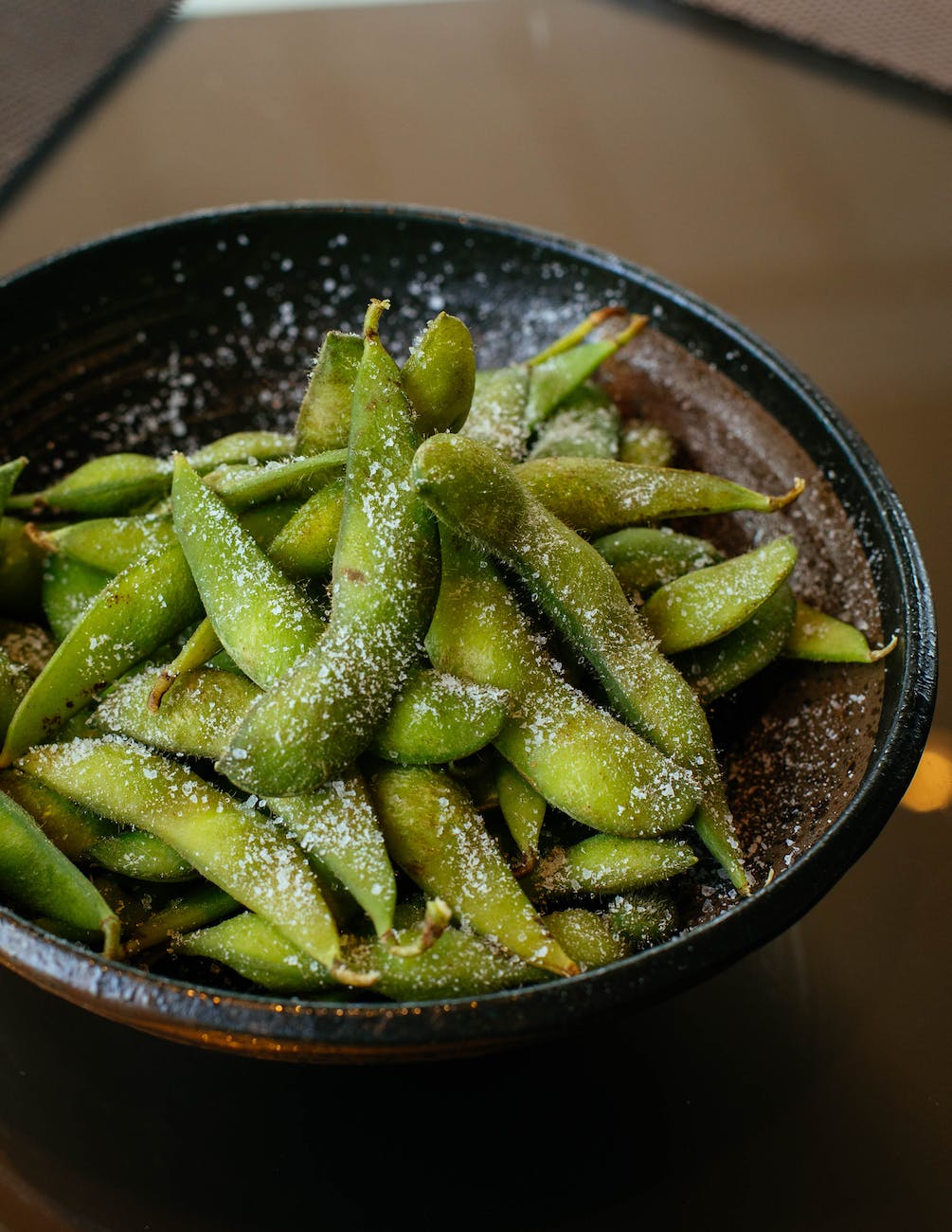
Electrolytes play an indispensable role in our body’s day-to-day functioning. They help conduct electricity which aids muscle contractions, maintains fluid balance, and more. However, given our varied lifestyles and diets, it’s not uncommon to experience an imbalance. Wondering how to increase or balance electrolytes naturally? Read on!
What are Electrolytes?
Electrolytes are essential minerals found in your body that carry an electric charge. These charged minerals are vital for several key physiological processes and help ensure that your body functions optimally.
Key Functions of Electrolytes Include:
- Conducting Electrical Impulses: The electrical charge carried by electrolytes is essential for nerve signaling, which means they help your cells communicate with each other. This is particularly crucial for muscle contractions and neural activity.
- Maintaining Fluid Balance: Electrolytes help balance the amount of water in and out of your cells, tissues, and organs. They play a role in ensuring that the intracellular and extracellular environments are stable.
- Regulating pH Levels: Your body’s pH, which stands for potential hydrogen, needs to maintain a delicate balance, which is usually around 7.4 in the bloodstream. Electrolytes play a pivotal role in ensuring this balance.
- Supporting Energy Production: Electrolytes like magnesium are necessary for the energy-producing reactions in the body.
- Facilitating Muscle Functions: Proper muscle contraction and relaxation depend on the flow of electrolytes in and out of muscle cells.
Common Types of Electrolytes Include:
- Sodium (Na+): Often found in salt, sodium is crucial for maintaining fluid balance, nerve signaling, and muscle contractions.
- Potassium (K+): Found in foods like bananas and avocados, potassium aids in muscle contractions, nerve signaling, and fluid balance.
- Calcium (Ca++): Essential for bone health, calcium also supports cell division, muscle function, and nerve signaling.
- Magnesium (Mg++): Present in nuts, grains, and green vegetables, magnesium is vital for energy production, muscle contractions, and nerve signaling.
- Phosphate (HPO4-): Helps with energy production and pH balance.
- Chloride (Cl-): Often found alongside sodium in the body, chloride helps maintain fluid balance.
- Bicarbonate (HCO3-): Essential for maintaining the body’s pH balance.
It’s important to understand that an imbalance in electrolytes can lead to various symptoms and health issues. This is why it’s crucial, especially for those who lead an active lifestyle or have specific health conditions, to ensure that they maintain a proper balance of these electrically charged minerals.
Why Are Electrolytes Important?
Electrolytes, as we’ve touched upon, are not just essential minerals; they are the linchpins of many physiological processes that keep our body ticking. Their importance cannot be overstated, especially considering the multitude of roles they play in maintaining our health and vitality.
Here’s a deeper dive into their significance:
- Regulating Fluid Balance: Our body is predominantly made up of water. Electrolytes help regulate the movement of water in and out of cells, tissues, and organs. They ensure that we maintain an appropriate amount of hydration in all parts of our body. This is crucial because even a slight disruption in fluid balance can lead to dehydration or overhydration, both of which can have severe consequences.
- Ensuring Proper Nerve Function: The brain communicates with the rest of the body through electrical impulses. Electrolytes, especially sodium and potassium, are critical for transmitting these signals from the brain to our muscles and other parts of the body. This is the reason you might experience muscle twitches or spasms when there’s an electrolyte imbalance.
- Supporting Muscle Contraction: For muscles to contract and relax properly, calcium, sodium, and potassium need to flow in and out of muscle cells in a specific sequence. Any imbalance can lead to muscle cramps, weakness, or, in extreme cases, serious conditions like rhabdomyolysis.
- Regulating Heartbeat: Our heart, the vital muscle, depends on electrolytes to maintain its regular rhythm. An imbalance, especially in potassium and calcium, can lead to arrhythmias or other cardiac issues.
- Maintaining Acid-Base Balance (pH): Our body functions best at a slightly alkaline pH level, and electrolytes are pivotal in maintaining this. Bicarbonate and phosphate are key players in buffering the body’s pH, ensuring it remains stable.
- Supporting Energy Production: Magnesium is crucial for ATP production, the primary energy source for cellular functions. Without adequate magnesium, our cells wouldn’t have the energy they need to perform.
- Bone Health: Calcium and phosphate are vital for bone formation. An imbalance can lead to weakened bones, making one susceptible to fractures.
- Assisting in Nutrient Transport: Electrolytes help in the transport of nutrients into cells and waste products out of them. This ensures that our cells receive the nourishment they need and are able to get rid of waste efficiently.
In summary, while electrolytes might be tiny charged minerals, they have a monumental impact on our overall health. From our muscles to our mind, from our bones to our heartbeats, electrolytes are fundamental. Ensuring we have a balanced intake and that our body maintains optimal levels is key to good health and well-being.
Signs and Causes of Imbalance
Electrolyte imbalances can be subtle or overt, manifesting in a range of symptoms. Identifying the signs early can help in mitigating potential health risks. It’s equally essential to understand what might be causing these imbalances to prevent recurrence.
Common Signs of Electrolyte Imbalance:
- Muscle Aches and Spasms: Since electrolytes play a crucial role in muscle contraction, an imbalance can lead to uncontrolled muscle spasms, cramps, or general muscle weakness.
- Fatigue: As electrolytes are involved in energy production, any discrepancy can result in unexplained tiredness or fatigue.
- Nausea and Vomiting: Especially associated with sodium imbalances.
- Irregular Heartbeat: An imbalance, notably of potassium and calcium, might disrupt the heart’s rhythm, potentially leading to palpitations or arrhythmias.
- Confusion or Changes in Behavior: As they influence neural activity, electrolyte disruptions can lead to mood changes, confusion, or even seizures.
- Numbness: Areas of the body, especially extremities like hands and feet, might feel tingly or numb.
- Bone Disorders: Chronic imbalances, particularly calcium and phosphate, can affect bone density and strength.
- Excessive Thirst or Urination: An increased need to drink water or frequent urination can be indicative, especially when related to sodium imbalances.
- Swelling or Edema: Particularly in the ankles, feet, or hands.
- Constipation or Diarrhea: Potassium imbalances are commonly associated with these digestive issues.
- Blood Pressure Fluctuations: Electrolytes help regulate blood pressure, so imbalances can result in hypertension or hypotension.
Causes of Electrolyte Imbalance:
- Dehydration: Not consuming enough fluids, especially during excessive sweating from workouts, can quickly lead to imbalances.
- Medications: Certain medicines, like diuretics, chemotherapy drugs, or antibiotics, can alter electrolyte levels.
- Kidney Diseases: As kidneys play a pivotal role in filtering and balancing electrolytes, any disease or malfunction can lead to imbalances.
- Poor Diet: Not consuming a balanced diet with the necessary minerals can result in discrepancies.
- Excessive Fluid Intake: Ironically, overconsumption of water in a short period can dilute electrolytes, leading to a condition called water intoxication or hyponatremia.
- Certain Health Conditions: Conditions like diabetes, heart disease, cancer, or hormonal disorders can disrupt the balance.
- Chemotherapy: The drugs used in chemotherapy can affect electrolyte levels.
- Alcoholism: Chronic alcohol consumption can disrupt the balance, especially of magnesium and potassium.
- Eating Disorders: Conditions like bulimia or anorexia can lead to vomiting or reduced intake, causing imbalances.
- Age: Elderly individuals may be more susceptible due to reduced kidney function or medication use.
Understanding the signs and causes of electrolyte imbalance is the first step towards achieving a balanced state of health. Regular check-ups, staying hydrated, and consuming a balanced diet can mitigate most risks associated with these imbalances. If you observe any of these signs, it’s crucial to consult a healthcare professional.
How to Balance & Increase Electrolytes
Maintaining a balanced diet that incorporates foods rich in essential electrolytes is key to overall health. The best approach to ensure proper electrolyte levels is to consume them from natural sources. Here’s a list of foods and how they contribute to balancing your body’s electrolytes:
1. Potassium-Rich Foods:
Potassium plays a pivotal role in muscle contractions, nerve function, and maintaining a regular heart rhythm.
- Bananas: A popular go-to for a quick potassium boost.
- Spinach: Not only packed with iron but also an excellent source of potassium.
- Sweet Potatoes: These are loaded with potassium and can be included in various dishes.
- Avocados: A creamy and delicious source of potassium.
- Beans: White beans, in particular, are potassium-rich.
2. Sodium-Abundant Foods:
Sodium helps control blood pressure and volume and ensures proper muscle and nerve function.
- Beets and Beet Greens: Both the root and the leaves are high in sodium.
- Carrots: This common vegetable is a good sodium source.
- Celery: Contains a notable amount of sodium.
3. Calcium-Infused Foods:
Essential for bone health, calcium also aids in nerve signaling and muscle contraction.
- Dairy Products: Milk, yogurt, and cheese are calcium-rich.
- Kale: This leafy green is a dairy-free calcium source.
- Sardines and Salmon: Both these fish types, when consumed with bones, offer a good calcium amount.
- Almonds: Apart from being protein-packed, almonds are also calcium-rich.
4. Magnesium-Loaded Foods:
Magnesium supports a variety of biochemical reactions in the body, including muscle and nerve function.
- Dark Chocolate: Besides being a treat, it’s also packed with magnesium.
- Nuts and Seeds: Especially almonds, cashews, and chia seeds.
- Whole Grains: Oats, quinoa, and barley are magnesium-rich grains.
- Leafy Greens: Spinach, collard greens, and Swiss chard are all good sources.
5. Chloride-Containing Foods:
Chloride, usually found in combination with sodium, helps maintain fluid balance.
- Tomatoes: Whether in the form of juice, soup, or raw, tomatoes are a good source of chloride.
- Lettuce: A common salad ingredient, lettuce provides chloride.
- Olives: Besides adding flavor to dishes, olives are chloride-rich.
6. Phosphorus-Rich Foods:
Phosphorus is crucial for energy production and bone health.
- Fish: Especially salmon, sardines, and cod.
- Lentils: These are not only protein-packed but also offer a good phosphorus amount.
- Whole Grains: Quinoa, oats, and barley provide phosphorus.
Incorporating a variety of these foods in your daily diet can significantly assist in maintaining a balanced electrolyte level. It’s also essential to remember that while these foods provide vital nutrients, moderation is key. Overconsumption of any nutrient can tip the balance and lead to imbalances. Always consult with a nutritionist or healthcare professional if unsure about dietary choices.
The Benefits of Homemade Electrolyte Drinks
In today’s fast-paced world, when dehydration strikes or after an intense workout session, many of us reach for store-bought electrolyte drinks. While they can be convenient, they often come with added sugars, artificial colors, and other ingredients that might not align with everyone’s dietary preferences or health goals. That’s where the magic of homemade electrolyte drinks comes into play.
Customizable to Your Needs:
One of the most significant advantages of homemade electrolyte drinks is the ability to tailor them to your specific needs and tastes. Whether you’re following a keto diet, aiming for low sugar, or need a drink that’s kid-friendly, you can adjust the ingredients and proportions accordingly. Plus, if you have specific health concerns or dietary restrictions, like diabetes or a fasting regimen, customizing becomes even more crucial.
Natural Ingredients:
With a homemade electrolyte drink, you have complete control over what goes into your body. You can opt for natural sweeteners like honey or stevia, use fresh fruit juices without additives, and skip the artificial flavors and colors entirely. This approach not only ensures a healthier drink but often results in a more vibrant and genuine taste.
Cost-Effective:
Buying ingredients in bulk and making your electrolyte drinks can be more economical in the long run compared to constantly purchasing branded drinks. Plus, many of the ingredients, like salt or honey, are staples in most households.
Environmental Impact:
Homemade drinks also mean fewer plastic bottles, reducing your carbon footprint. By using reusable containers, you’re taking a step towards a more sustainable lifestyle.
Variety is the Spice of Life:
When you make your own drinks, you’re not limited to the flavors available on the store shelf. Feel like combining mango with basil? Go for it! The possibilities are endless, allowing for a diverse range of flavors based on seasonal fruits or personal cravings.
Enhanced Nutritional Value:
Apart from the primary electrolytes, using natural ingredients can infuse your drinks with additional vitamins, antioxidants, and other beneficial compounds. For instance, ginger can add a flavor punch while providing anti-inflammatory benefits. Turmeric can give a golden hue and a dose of powerful antioxidants.
For inspiration on crafting the perfect homemade electrolyte drink, be sure to check out our comprehensive guides on:
Making your own electrolyte drinks ensures a refreshing, healthy, and tailored hydration source, packed with the benefits of natural ingredients. It’s a journey of exploration, both in terms of flavors and health benefits!
Homemade Electrolyte Solutions
Electrolyte needs can vary based on individual circumstances, dietary preferences, health concerns, and specific activities. Not everyone will benefit from the same electrolyte solution. Here’s a look at why custom solutions matter and how you can create the right drink for your unique needs.
Personal Dietary Preferences:
Our diets and lifestyle choices directly influence the kind of nutrients our body demands. For instance, those on a keto diet have a unique set of needs. The keto lifestyle often requires more magnesium, potassium, and sodium because of its diuretic effect. Meeting these specific needs becomes easier with a tailored keto-friendly electrolyte drink. Similarly, vegans might lean towards plant-based sources for their electrolytes, opting for alternatives like coconut water and avoiding dairy or honey.
Specific Health Concerns:
Certain health issues necessitate more care in our nutritional intake. Diabetics, for instance, need to be watchful of their sugar levels. A general store-bought electrolyte drink might contain added sugars, which aren’t suitable. Our guide on electrolyte drinks specifically tailored for diabetics can be a lifesaver in such situations. Meanwhile, those with high blood pressure might prefer a homemade solution with controlled sodium levels.
Activity Levels and Purposes:
The hydration needs of an avid marathon runner vary vastly from someone recovering from an illness. While athletes might need post-workout electrolyte drinks with the right balance of carbs and salts, someone under the weather would benefit from a gentle, soothing drink with immune-boosting properties. And for those on a spiritual journey or health regime that includes fasting, maintaining electrolyte levels without breaking the fast becomes essential. Dive into our guide on fasting-friendly electrolyte drinks for more insights.
Geographical and Climatic Considerations:
Geography plays a significant role in our hydration needs. Living in a tropical climate, with its humidity and heat, means your body sweats more, resulting in a higher loss of electrolytes. Those in high altitudes might experience faster dehydration. In such conditions, turning to natural electrolyte drinks tailored for dehydration can be a boon.
Age and Life Stages:
Different life stages, from childhood to senior years and even special phases like pregnancy, come with unique nutritional demands. Tailoring drinks based on these needs ensures everyone gets the benefits without side effects.
Taste and Enjoyment:
And, of course, why should health compromise taste? By crafting your tailored solution, you can mix and match flavors you adore, ensuring you enjoy your hydration process while reaping all the health benefits.
In essence, while there are general solutions catering to broader needs, there’s undeniable power in creating a drink that’s just right for you. With tailored electrolyte solutions, you’re not just hydrating but nurturing your body in the most personalized way. Whether it’s a specific health goal, a flavor preference, or an individual requirement, the perfect drink awaits your creation.
DIY Tips and Tricks
Creating your homemade electrolyte drink can be a fulfilling and health-boosting experience. However, the process is more than just throwing together some ingredients. Here are some proven DIY tips and tricks from our previous explorations into the world of homemade electrolyte drinks. Dive deeper into each by checking out the related posts.
Choose Your Base Wisely:
Your drink’s base fluid plays a pivotal role in the overall flavor and efficacy. Some popular bases include coconut water, plain water, or herbal teas. For instance, coconut water is a natural source of electrolytes like potassium, sodium, and magnesium, making it a favorite for many. Want to explore more about different bases? Check out our guide on natural electrolyte drinks for dehydration.
Use Natural Sweeteners:
Refined sugars might offer sweetness, but they aren’t always the healthiest choice, especially for those with specific dietary restrictions. Consider using natural sweeteners like honey, maple syrup, or stevia. Diabetics, in particular, can find alternatives in our diabetic-friendly electrolyte drinks post.
Mind the Salt:
Salt is essential in replenishing sodium, but the type and quantity matter. Opt for sea salt or pink Himalayan salt as they come with trace minerals. Those on specific diets, like keto, might need slightly more salt to compensate for losses. Dive deeper with our keto-specific electrolyte drinks guide.
Add Some Zing with Citrus:
Citrus fruits like lemons, oranges, and limes aren’t just flavor boosters. They provide essential vitamins and help in alkalizing the body. Consider adding a splash for taste and health!
Consider Herbal Additions:
Herbs like basil, mint, or even certain roots like ginger can offer therapeutic properties and a unique taste to your drink. Ginger, for instance, is great for stomach upsets and offers a warming touch.
Tailor for Specific Needs:
Whether you’re crafting a drink for post-exercise recovery, fasting, or general hydration, always keep the end goal in mind. This will influence the ingredients and ratios you use. For more tailored recipes, explore our post on post-workout electrolyte drinks or those for fasting.
Taste As You Go:
Lastly, while recipes are a great starting point, always trust your palate. Tasting as you go ensures the right balance of sweet, salty, and tangy, tailored perfectly to your liking.
Incorporating these tips and tricks will not only ensure you get a flavorful and effective drink but will also make the process enjoyable. So, ready to whip up your custom electrolyte solution? Dive into our comprehensive posts to guide your DIY journey. Happy hydrating!
FAQs on Electrolytes
1. What are electrolytes?
Electrolytes are minerals that carry an electric charge when dissolved in water. They are crucial for various physiological processes, including maintaining nerve and muscle function, regulating body’s hydration, and balancing blood acidity and pressure.
2. Why are electrolytes important?
Electrolytes play a pivotal role in transmitting electrical signals in the body. This aids in muscle contractions, nerve signaling, and maintaining the fluid balance within cells. Without them, our body’s essential functions could falter.
3. How can I naturally balance electrolytes?
You can balance electrolytes naturally by consuming a diet rich in whole foods such as fruits, vegetables, legumes, and nuts. Additionally, consider making homemade electrolyte drinks to ensure optimal intake.
4. What are signs of electrolyte imbalance?
Common signs include muscle cramps, fatigue, dizziness, nausea, irregular heartbeat, and changes in blood pressure. Severe imbalances might require medical attention.
5. How do I fix an electrolyte imbalance at home?
While severe cases should be handled by professionals, mild imbalances can often be addressed with proper hydration and a balanced diet. Our collection of DIY electrolyte drinks can also be a valuable resource.
6. Which foods are high in electrolytes?
Bananas, spinach, beans, potatoes, nuts, seeds, and avocados are rich in various electrolytes. For more specifics, see our section on natural foods for electrolyte balance.
7. How can I increase my sodium levels naturally?
Consuming sea salt, broth, beets, and spinach can help. Those specifically looking for sodium-centric solutions might find our dehydration post particularly helpful.
8. What drinks are good for electrolyte replacement?
Besides commercial sports drinks, natural options like coconut water, homemade lemonade with a pinch of salt, or our DIY recipes like those for post-workout are excellent choices.
9. Are there any homemade alternatives to commercial electrolyte powders?
Absolutely! Creating a homemade electrolyte mix can be both economical and healthier, allowing you to avoid unnecessary additives.
10. Can I make an electrolyte drink without citrus?
Yes, while citrus adds flavor and Vitamin C, there are many other ingredients like berries, herbal teas, and natural sweeteners you can use. Explore more in our dehydration drinks post.
11. How do electrolytes help during fasting?
During fasting, the body may deplete its natural store of electrolytes. Consuming an electrolyte solution can help maintain balance. For tailored solutions, see our fasting electrolyte drinks guide.
12. Is it safe to consume electrolyte drinks daily?
In moderation, especially if made at home with natural ingredients. However, always listen to your body and adjust intake based on activity levels and individual needs.
13. What happens when there’s too much electrolytes in the body?
Known as hyperkalemia, it can lead to issues like irregular heartbeat, high blood pressure, and even kidney disease.
14. Can diabetics consume electrolyte drinks?
Yes, but it’s essential to watch the sugar content. We have curated diabetic-friendly electrolyte recipes to assist those with specific sugar concerns.
15. How does one restore electrolyte balance after exercise?
Post-exercise, it’s crucial to replenish lost salts and fluids. Consuming water along with electrolyte-rich foods or drinks can help. Our post-workout electrolyte drinks are tailored for such needs.
16. Can you make a keto-friendly electrolyte drink?
Certainly! Keto diets often lead to a higher need for electrolytes due to initial water loss. Dive into our keto-specific electrolyte drinks guide for more.
17. How can children maintain electrolyte balance?
While a balanced diet usually suffices, if a child is involved in intense physical activity or falls sick, a mild homemade electrolyte drink can help. Always ensure it’s low in sugar and consult with a pediatrician if unsure.
18. Do beverages like tea and coffee affect electrolyte balance?
Yes, caffeine can act as a diuretic, increasing urine and potentially flushing out electrolytes. It’s essential to balance caffeinated drinks with adequate hydration.
19. Are there any side effects to consuming too many electrolyte drinks?
Overconsumption can lead to hyperkalemia or an overabundance of certain minerals in the body. Always consume in moderation and as per individual needs.
20. How often should I consume electrolyte drinks?
It varies based on individual needs, activities, and diet. For those regularly engaged in intense physical activity or in specific situations like fasting or following a keto diet, more frequent consumption might be beneficial.
For a deeper dive into these topics and tailored solutions, don’t forget to explore our comprehensive electrolyte guides.
Wrapping Up
The world of electrolytes is vast and intricate. By respecting the balance and understanding their pivotal role, we pave the way for optimal health. Nature offers solutions at every step, and it’s time we embraced them for a healthier tomorrow.
Engage with Us
Was this guide helpful? Do you have an electrolyte secret to share or perhaps a personal journey? Your insights and stories enrich our community. Drop a comment, share this guide with friends and family, or engage with our vibrant community online. Together, let’s embark on a journey toward better health.














